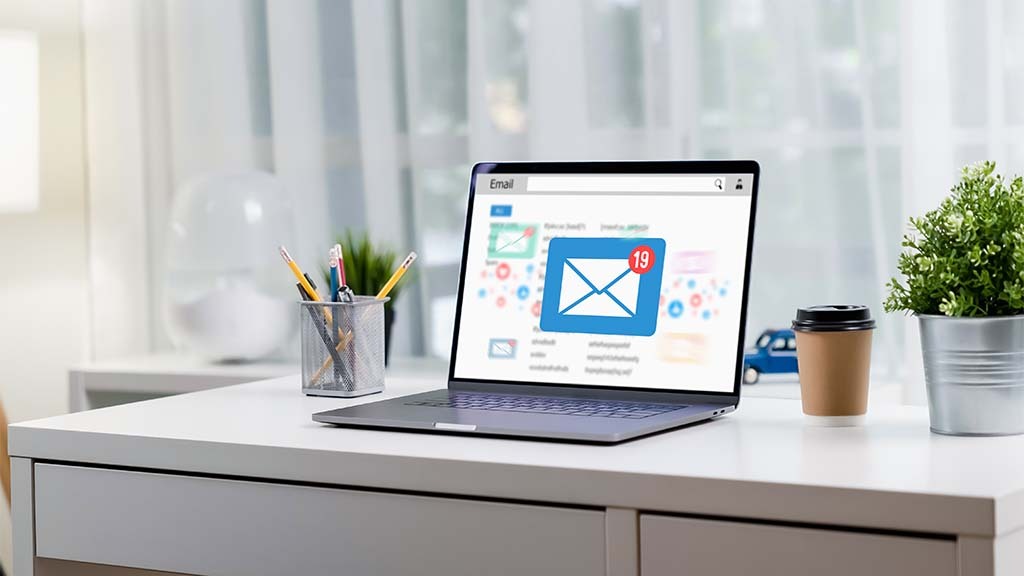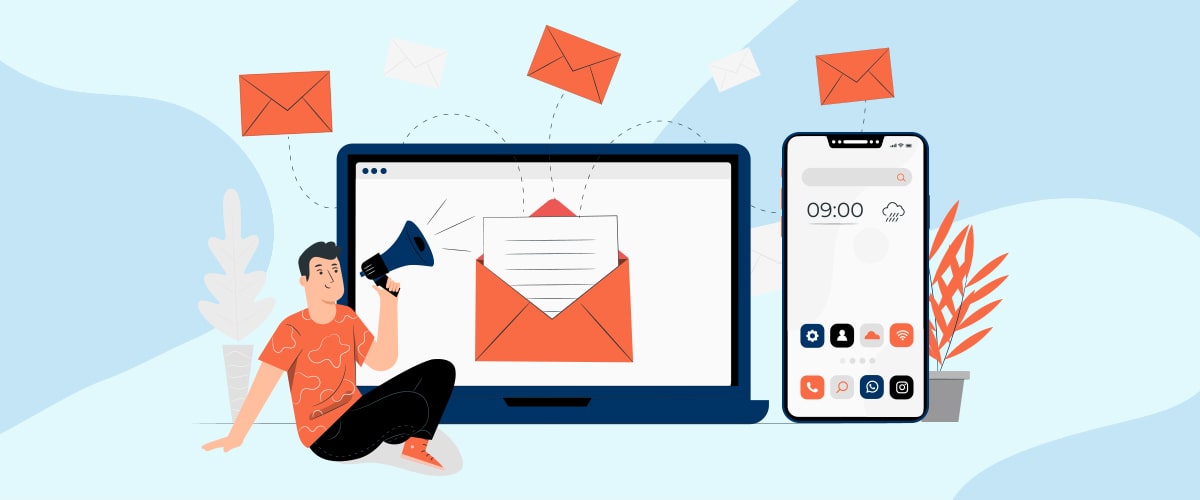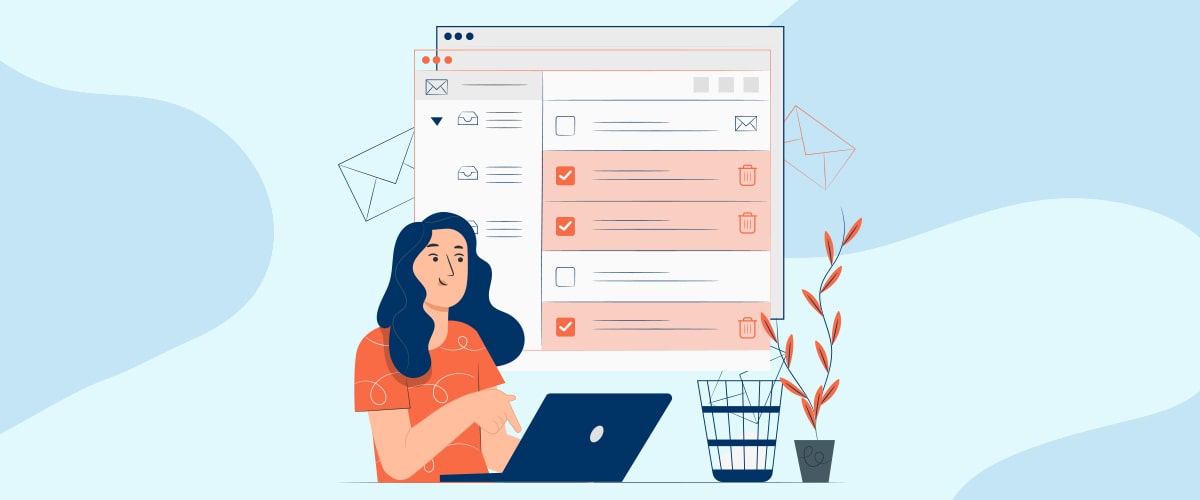In a digital world that is constantly changing, it is essential to be on the difference to get away from what the competition does. The easiest path is to stick with the established rules and follow the classic marketing patterns, but this will not make you more visible in your brand. To get users’ attention, you have to take care of all the details.
A fundamental way to make a difference is to put effort into creating and defining an email marketing strategy.
What is Email Marketing, and what do I need to do it?
Email marketing is a powerful tool that creates direct communication with the client. It is not just about sending emails regularly. Still, it refers to the approach, the tactics used, and the different actions implemented that pursue the commercial and strategic objectives of the brand through email.
Despite being present in our daily lives for many years, its formula continues to work if an effective strategy is followed and focused on objectives.
If we were to create a welcome pack for email marketing, it would have to contain three elements:
- An application to manage campaigns
- A strategy
- dedication and creativity
Email marketing strategies will be vital to connecting with the target audience to promote your brand and thus increase sales. Several email marketing applications will facilitate this process and allow you to know the results of the different campaigns. Of course, there are different steps that you must follow to establish the foundations of your marketing strategy.
As you can imagine, I cannot design a strategy just for you in this post, nor can I wrap a package with dedication and creativity. But I can tell you the steps you must follow to do it yourself.
How to Prepare an Email Marketing Strategy
In the same way that you would only make a television spot with having previously planned what you are going to communicate and how you will capture it visually, a strategy is also necessary to make good use of email marketing.
To start working on an email marketing strategy, try to put yourself in the user’s shoes. How many emails do you receive daily? Which of them manages to get your attention from all the ones you have in your inbox? Take your personal experience as a reference to transfer it to your strategy.
In most cases where we create an email, we do so with the intention of increasing our sales or our traffic. Still, there are other purposes. We can also create email marketing strategies to encourage, reactivate or reward our readers with additional information of interest.
Emailing brings us closer to all our clients. Therefore, we must take advantage of this contact to create a more human and less artificial relationship.
-
Analysis of the Current Situation
Although the necessary time is only sometimes dedicated to this initial step, it is essential to do so to establish the bases on which to work. In other words, it is essential to know where the brand is, what it has done so far and what has worked best for it. It is then that we are going to have some first insights to advance with the approach of the strategy that will be followed.
Therefore, it is important to dedicate efforts to analyzing the current situation and the results achieved from the email marketing campaigns that have been carried out and thus be able to determine the opportunities and challenges for the strategy to be more effective.
In order not to leave any loose ends, all the conclusions can be captured in a SWOT, a graph in which all the insights are ordered into the following four categories: strengths, opportunities, weaknesses, and threats. While the strengths and weaknesses depending on the brand, the other two points are external factors that should help us find and assess directions in which to work.
And remember that it is essential to have on the reader what the competition is working on and the way in which they are doing it. You can subscribe to their emails and analyze which points work well to apply them to your strategy and what other aspects you want to avoid in order to make a difference.
-
Defining the objectives and Target Audience
In this phase, it is the perfect moment to ask yourself the big question: for what and for whom will email be?
The first thing we must do to answer the question is to determine our objective and know what we want to communicate. It is not the same to prepare an email marketing campaign to spread a special promotion in our e-commerce than to prepare another campaign with the aim of retaining our database with an email containing advice or news of interest.
What do you want to get?
The objectives of your email marketing campaign must be aligned with the general business and marketing objectives. To limit them, remember that these must be SMART. Namely:
- Specific: specific. They have to be specific and well-defined, clearly specifying what is to be achieved and avoiding possible ambiguities.
- Measurable: measurable. They need to be quantifiable in order to assess your progress.
- Attainable: achievable. They have to take into account both the possibilities and limitations of the brand (in terms of performance and economics).
- Realistic: Realistic. They have to be aligned and fit with the project as a whole.
Best Strategies for Email Marketing
-
Content Strategy
Taking care of the content means creating quality emails. An email is judged mainly by the information it can provide to the reader. Therefore, including truthful and relevant content must be a requirement to be met without exception in any email marketing strategy.
So, once we have defined our objective according to the segmentation of our database, we have to write the content and decide the arrangement of the elements that will give the body to our emails. Let’s not forget in this part to find an adequate balance between images and texts: no writing the bible in verse or turning our emailing into Instagram. In an email marketing campaign, less is more.
But… how can you get the attention of users?
- Recipient name: use the real name of the brand or the person.
- Subject: Be creative and eye-catching. It depends on it whether or not the user decides to open the mail. Personifying it to the fullest will help you capture their attention. For example, by adding his name, you will emphasize the idea that you are communicating or offering something exclusively for him.
- Preview text: use it to generate curiosity. Briefly comment on what the user is going to find in the mail and do it with some surprise.
- Body of text: keep it short and present the main ideas clearly at the beginning so that the user does not lose interest and wants to continue reading.
- CTAs: add a call to action highlighting what you are offering. Place it at the top to make sure the user sees it without scrolling. In parallel, you can place another at the end as a closure of the email and thus remember what you are promoting.
If you have doubts about how to present an email or what approach to give to some of its elements, you can choose to carry out an A/B test. This functionality will allow you to make variations in your campaigns (compare two different subjects, different title approaches, and delivery times…) and analyze which of them achieves the best results to apply in future situations. In this way, you will be able to make decisions backed by data.
Finally, try never to lose sight of the needs of your segment so that all the communications you send them are aligned with their interests.
2. Shipping Frequency
It is time to define the frequency of sending; that is, the most optimal moments to send the different emails.
Without forgetting the segment with which we are working, it is important to know how often (weekly, monthly, quarterly…) and on what days in particular to send the communications.
Email marketing can work against you if you don’t control the amount of information you send. Remember that there is a second difference between opening that interesting email and ignoring it among the mountain of pending emails in your inbox.
Once a month is usually enough unless you have a lot, a lot of content to send. Then you can increase it to once a week. If you have doubts, feel like a subscriber again, and then decide if you really need to send that content.
The day of the week and time are also important decisions.
In any case, there is no single correct answer, so we recommend that you create a calendar in which you locate the shipping dates and keep track of it to analyze the first results and decide if any adjustments need to be made or not.
3 Analysis of the Results
This last step is what will allow us to know the results of our email marketing campaign and analyze its performance. In addition, it will help us to draw conclusions and lessons for future campaigns.
To assess the success of your campaign, you can look at the following metrics:
- Open rate
- Click rate
- bounce rate
- Reactivity rate
- cancellation fee
- Spam Complaint Rate
- Conversion rate
To be able to go into detail about all these metrics, you can choose to hire an email marketing tool that fits the needs and limitations of your company.
Benefits of Using an Email Marketing Tool
When you use an application that manages the sending of your emails, you can access a series of benefits and advantages that will help you direct your campaign:
-
You can measure the performance of your campaign
The application will allow you to access reports on:
- How many people have opened the email?
- How long have they been reading it?
- If it has been opened from a computer or from a mobile device.
- How many times have they accessed it?
- How many people clicked on the linked links in the email?
- How many have shared it among their contacts?
With these statistics, it will be much easier to adapt your content according to the attitude of the users and also to detect errors to correct them and be able to improve for the next campaign you plan.
2. Use default templates and Customizable Design
With an email marketing application, you will be able to use the drag and drop system, or, what is the same, it will be enough for you to take the objects and drag them to be able to place modules and start creating.
Another option is to use the default templates that can be adapted to any type of context.
In this way, you will not only be more efficient when planning emails, but you will also have the possibility of customizing them to your liking and with the security of having the support of a good design.
3. You will have well-organized contact lists
The moment of choosing who you are going to send your campaign to is very important. The segmentation of contacts in your agenda is a key step in mailing. You can also make sure that all those inactive, repeated, or bounced users are not among the list of recipients. A specific and well-selected target can make a difference in the success of your campaign.
4. Personalization, a fundamental factor
It may seem like an unimportant detail, but the fact that your customers receive their emails headed by their name always works better. That is, you will first look at an email that contains your name in the subject since it is a word that we can recognize at a glance. Taking advantage of that hook will help you continue reading the rest of the matter.
With the email marketing application, you can automatically program this option. Can you imagine having to write each email one by one with each name of your clients?
5. Try to create a Relationship of trust
What we want is for our usual customers to stay and the new ones that have arrived as well. And, in addition, all those who want to join. How do we get it? If we analyze the tracking of the clicks that our recipients make within the email, we can draw conclusions about what each one likes or is interested in.
Thus, the next time you generate content, you can take it into account and show them just what they want and are interested in. They will be happy with their content, and you will have achieved that feeling, which will strengthen the bond between the brand and the customer. Don’t let them down!
6. You can reschedule your campaign
Although less important, another point in favor of email marketing applications is the possibility of scheduling campaign shipments. This will favor you, especially during vacation times, weekends, or days off. You will be able to continue sending your newsletters without worries, and you will only have to take care of leaving everything ready to be able to schedule the shipment.
Conclusions about Email Marketing
Perhaps you think that theory is always easier than practice, but we really believe that if you start planning your email marketing strategies following the steps mentioned, you will notice results very soon.
And what do we like most about mailing? That any other option that we can consider will always have a higher cost. In any case, remember that there is no secret and a perfect formula for your next campaign, but now you know the steps to follow to find what works best for your target audience. Dare to try and experiment, and play with the fact that there are no rules when it comes to promoting your brand through digital marketing. Now it’s your turn!





